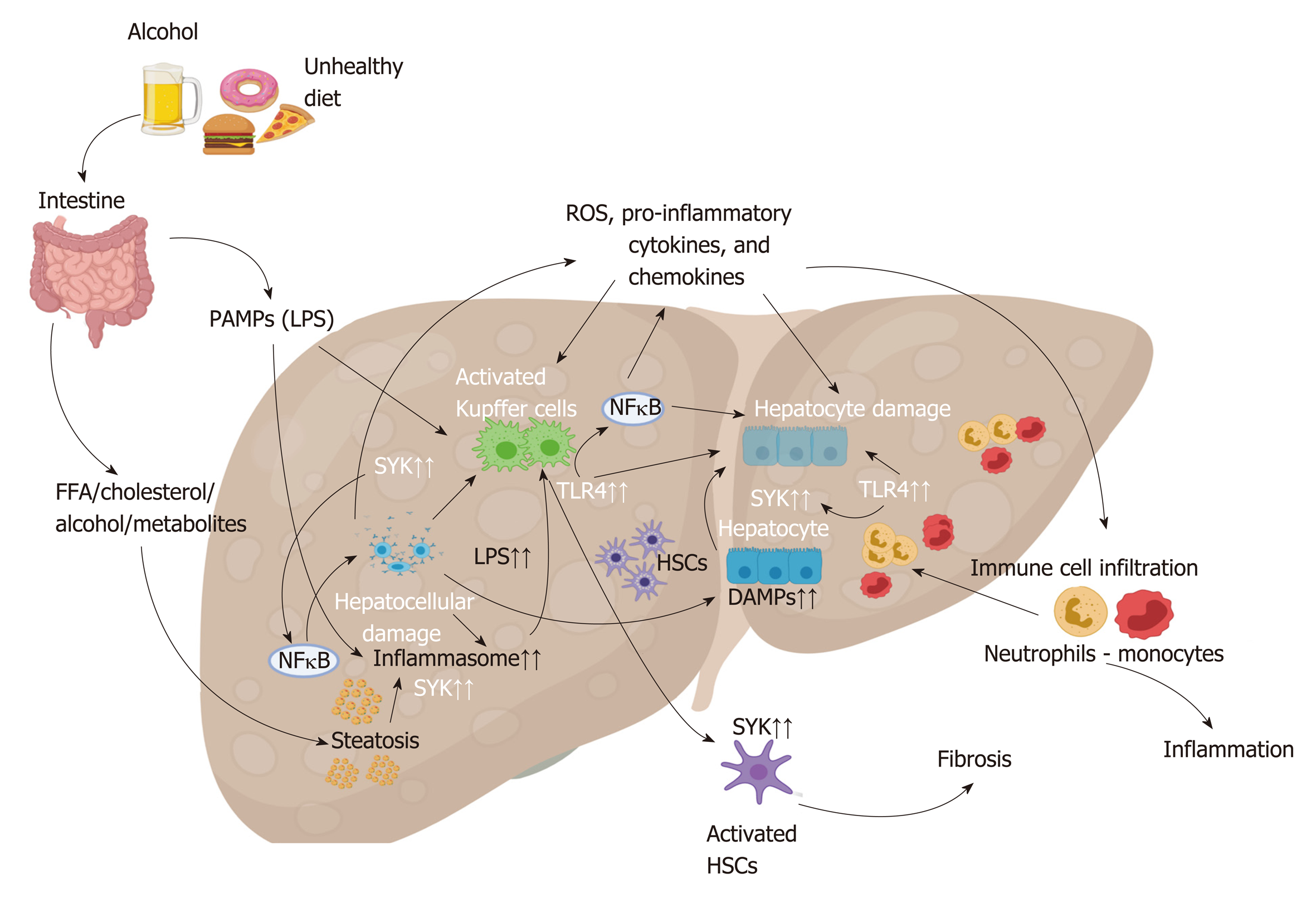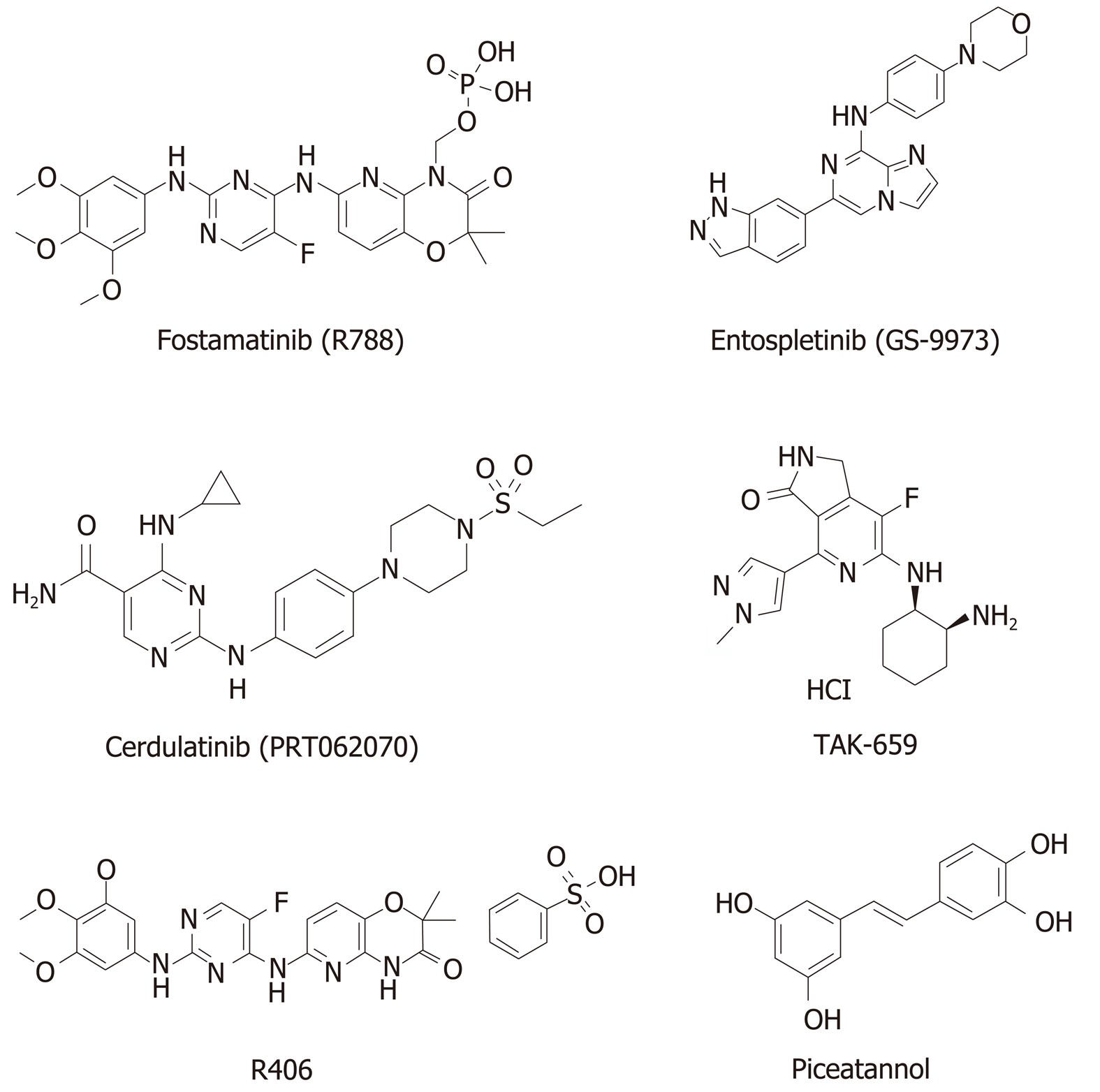Copyright
©The Author(s) 2020.
World J Gastroenterol. Mar 14, 2020; 26(10): 1005-1019
Published online Mar 14, 2020. doi: 10.3748/wjg.v26.i10.1005
Published online Mar 14, 2020. doi: 10.3748/wjg.v26.i10.1005
Figure 1 Structure of spleen tyrosine kinase.
Spleen tyrosine kinase contains tandem pair of spleen tyrosine kinase homology 2 which connected by interdomain A and separated by interdomain B from the catalytic (kinase) domain. SYK: Spleen tyrosine kinase; SH2: Spleen tyrosine kinase homology 2; ITAM: Immune-receptor tyrosine-based activation motifs.
Figure 2 Basis of spleen tyrosine kinase activation.
In the resting state, spleen tyrosine kinase is auto-inhibited, because of the binding of interdomain A and interdomain B to the kinase domain. This auto-inhibited conformation can be activated by binding of the two spleen tyrosine kinase homology 2 domains to dually phosphorylated immune-receptor tyrosine-based activation motifs or by phosphorylation of linker tyrosine’s in interdomain A or B. SH2: Spleen tyrosine kinase homology 2; ITAM: Immune-receptor tyrosine-based activation motifs.
Figure 3 Role of spleen tyrosine kinase in alcoholic liver disease and non-alcoholic steatohepatitis pathogenesis.
Excessive alcohol consumption and Increased fat accumulation due to an increased fat biogenesis and reduced metabolism, causes hepatocellular injury that generates reactive oxygen species, release of pro-inflammatory cytokines and chemokines leading to activation of resident macrophages (Kupffer cells), and recruitment of circulating immune cells including neutrophils and monocytes. Overconsumption of alcohol also trigger the production of lipopolysaccharides due to increased intestinal permeability. Increased levels of pathogen-associated molecular patterns (Lipopolysaccharides) and damage-associated molecular patterns (released from dying hepatocytes) that in turn interacts with toll-like receptors e.g., toll-like receptor 4 resulting in the activation of spleen tyrosine kinase signaling pathway, NF-κB signaling pathway, and inflammasome activation. These processes develop into liver inflammation and fibrosis via increased infiltration and activation of immune cells and hepatic stellate cells, respectively. SYK: Spleen tyrosine kinase; LPS: Lipopolysaccharides; PAMPs: Pathogen-associated molecular patterns; DAMPs: Damage-associated molecular patterns; TLRs: Toll-like receptors; HSCs: Hepatic stellate cells; ROS: Reactive oxygen species.
Figure 4 Molecular structure of several spleen tyrosine kinase inhibitors.
R406, GS-9973, PRT062070, and Piceatannol have been studied in liver diseases, while R788 and TAK-659 are being investigated in other diseases.
- Citation: Kurniawan DW, Storm G, Prakash J, Bansal R. Role of spleen tyrosine kinase in liver diseases. World J Gastroenterol 2020; 26(10): 1005-1019
- URL: https://www.wjgnet.com/1007-9327/full/v26/i10/1005.htm
- DOI: https://dx.doi.org/10.3748/wjg.v26.i10.1005












